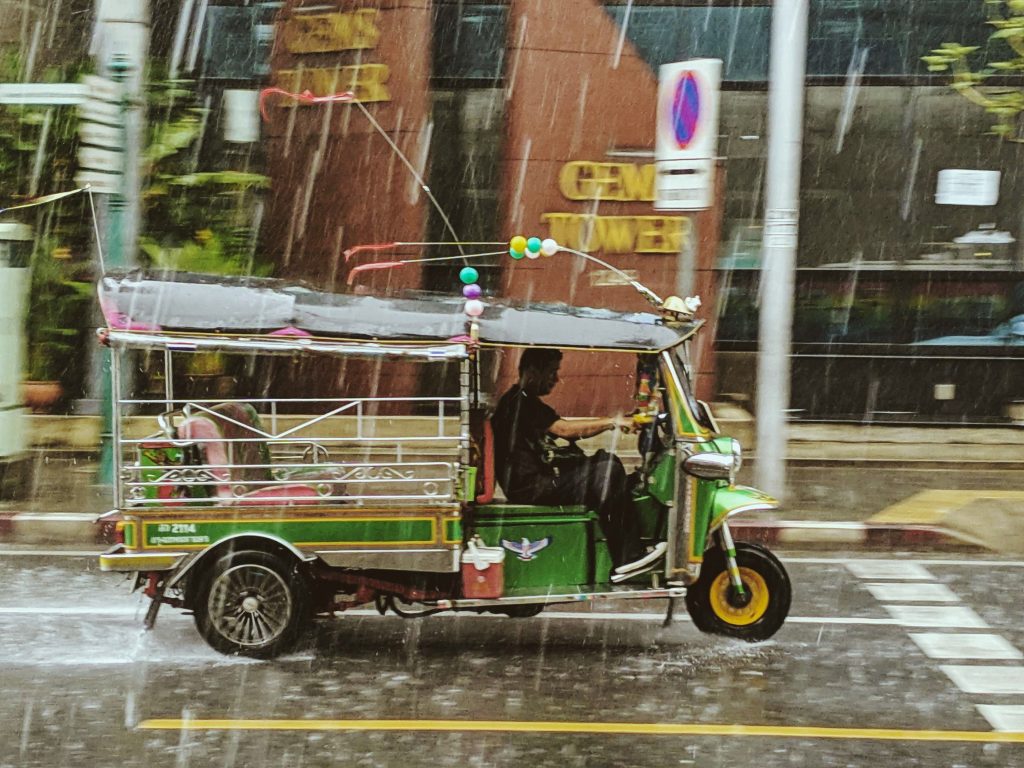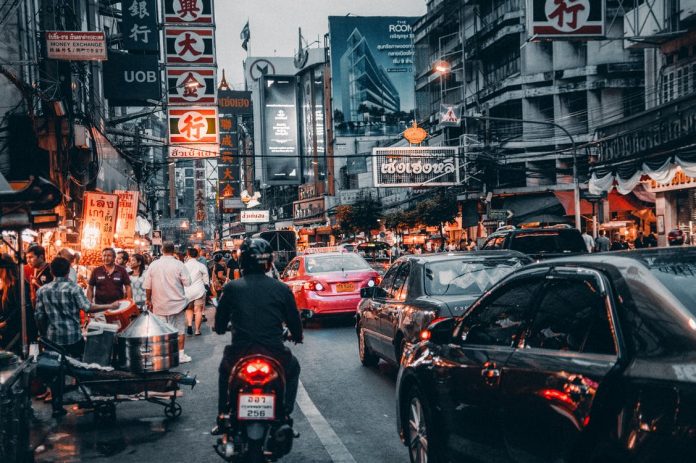Newcomers to Bangkok might feel overwhelmed by the seemingly endless choices of transportation, all clamoring for their newly exchanged baht. This list aims to reiterate the pros and cons of each transportation mode, thus making it easy for visitors to decide and discriminate when it comes to going from point A to point B in Bangkok.
Bangkok Transportation Mode 1: the Skytrain
Advantages: popular with the working middle class, the Skytrain is fast, cheap and convenient. The fact that it is actually an elevated train means that riders also get to see some scenery while commuting. For those who cannot stand the heat and humidity of Bangkok, the Skytrain’s powerful aircon is a godsend.
Disadvantages: unlike other countries which possess highly developed elevated train networks, the Skytrain in Bangkok only has two lines: the Sukhumvit line and the Silom line. These are fine when visitors need to move around within the metropolitan area, but when it comes to visiting other places out of the Skytrain’s reach, they are out of luck. What’s more, the Skytrain tends to get very crowded during rush hours, forcing some passengers to wait on the platform longer than usual. It can also get mighty uncomfortable during the scorching hot season, when the high tourist season means countless sweaty, hairy tourists exposing their armpits.

Bangkok Transportation Mode 2: Metered Taxis
Advantages: Bangkok has some of the most colorful metered taxis in the world, making for a cheerful road experience. They are also comfortable, since they are airconditioned and usually clean. Taxi drivers are often chatty and friendly to foreigners, providing much entertainment and banter. Taxis are abundant in Bangkok, and they can be hailed by passengers anywhere. Metered taxis in Bangkok are also quite cheap, with fares starting from 35 baht (around USD 1).
Disadvantages: while taxi drivers are usually agreeable, they can act up during bad weather (for example: heavy rain) or very heavy traffic. Translation: they might refuse to use their meter, or refuse to go to a certain destination altogether. Some crafty drivers might also take the long (or wrong) way to reach a destination in order to increase the fare. Lastly, some taxis can overwhelm first-timers’ senses: some taxis can smell quite “funky” to foreigners’ noses, thanks to taxi drivers’ penchant to sniffing herbal remedies, while some drivers might blast some local music that might sound “discordant” to foreigners’ ears.
Bangkok Transportation Mode 3: Public Buses
Advantages: there are two types of public buses in Bangkok: airconed and non-airconed. Both are dirt-cheap.
Disadvantages: Their low price means a dearth of customer service. There is no fixed bus schedule in Bangkok, which means that passengers can wait from between 5 to 45 minutes for the right bus to show up. Visitors who are not used to the city’s heat and pollution might melt/lose their temper/have a nervous breakdown while waiting for the bus.
Bangkok Transportation Mode 4: Tuk-tuk

Advantages: known for the “tuk-tuk-tuk” sounds they make, this three-wheeled transportation is the stuff of legends. Surviving a hair-raising tuk-tuk ride will ensure awe and respect when the visitor brags back home. Tuk-tuks are perfect for those who have a death wish, since a tuk-tuk driver will never fail to take the most daring and dangerous route (for example: squeezing between two enormous buses or going towards the opposite direction of the main traffic).
Disadvantages: a tuk-tuk ride will most often cost more than a taxi ride, because tuk-tuk drivers know that only gullible tourists take the tuk-tuk. What’s more, a 5-minute tuk-tuk ride will shave off 5 years from the passenger’s life because this passenger will be exposed to all the bacteria, germs, smoke and airborne particles that Bangkok has to offer (not to mention the high stress level of having to hold on for dear life during the ride).
Bangkok Transportation Mode 4: Motorcycle Taxis
Advantages: easily recognizable by their bright orange vests, motorcycle taxi drivers know the ins and outs of Bangkok very well, thus making motorcycle taxis the transportation choice for hurried customers who are already very late. Since motorcycle taxis can squeeze into small openings between vehicles, they are also mighty handy during heavy traffic. Cheaper than a taxi ride, a ride on a motorcycle taxi will also garner bragging rights for the visitor back home.
Disadvantages: like the tuk-tuk driver, the motorcycle taxi driver enjoys zig-zagging in Bangkok’s notorious traffic. Since most motorcycle taxi drivers rarely offer a spare helmet to the passenger (and if they do, the spare helmet is usually sweaty and smelly after sitting on top of countless previous passengers’ heads), safety is obviously lacking. Big-boned Western visitors are also vulnerable to getting their kneecaps busted while riding the motorcycle taxi, since the driver will usually estimate the available space between vehicles he can squeeze into based on his own body size (and leg length).
The Final Word On Bangkok Transportation Modes
With Bangkok receiving visitors from all around the globe, it is no wonder that the city offers vastly different modes of transportation. Any visitor to Bangkok should ask him/herself first before deciding on what kind of transportation is suitable: How much am I willing to pay? Am I in a hurry? What is my desired comfort level? Do I want to court death? The answers will make the decision-making process easier and more systematic.









